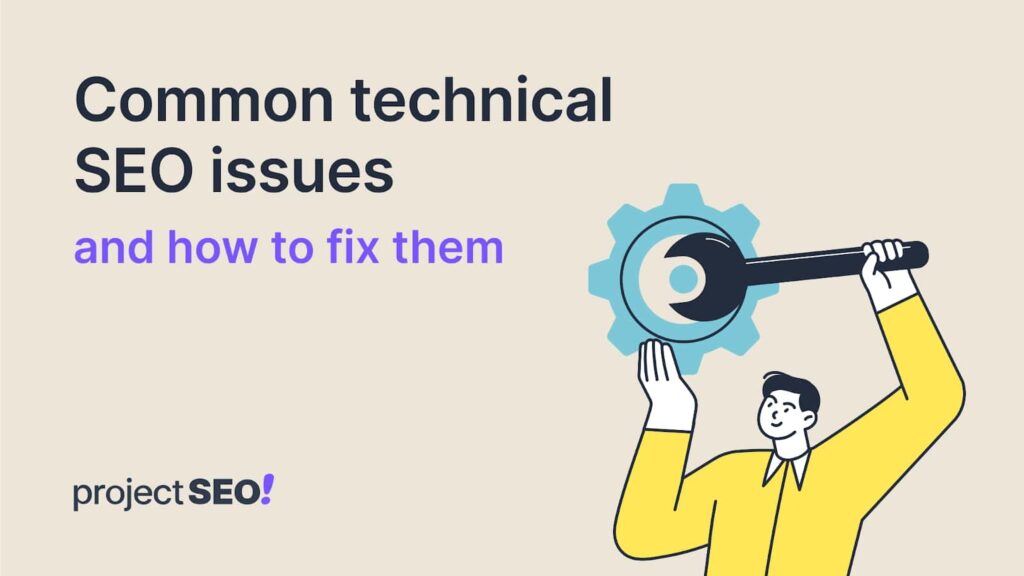While many SEOs agree that backlink building can boost search engine performance, not many have realized the importance of auditing these backlinks.
The fact remains that not all backlinks are beneficial—spammy or irrelevant links can harm your rankings or even lead to penalties from search engines like Google. That’s why conducting regular backlink audits is crucial. And when done right, an audit can boost your search rankings and increase visibility.
Let’s discuss the steps involved in running a backlink audit to help improve your SEO, protect your site from penalties, and strengthen your backlink profile.
Why Do You Need to Audit Your Backlinks Regularly?
A backlink audit is an SEO task in which you check all the links pointing to your website to see if they are helpful or harmful. The main goal is to find ways to improve your website’s SEO by reviewing the quality of these links and deciding what to do next. This includes determining whether the links are useful.
Protect Your Site from Penalties
Toxic backlinks—those from spammy, irrelevant, or harmful websites—can trigger penalties from Google. These penalties can cause a significant drop in your rankings or even lead to de-indexing from search engines. By regularly auditing your backlinks, you can catch and remove toxic links before they affect your site.
Maintain a Healthy Backlink Profile
A well-maintained backlink profile consists of links from high-authority, relevant, and diverse sources. Regular audits allow you to spot any issues early, ensuring that your link profile remains strong and valuable to your SEO strategy.
Boost Rankings with High-Quality Backlinks
By focusing on high-quality backlinks, you can improve your website’s credibility and search rankings. Regular audits help you identify and prioritize strong links while cleaning up low-quality ones that don’t contribute to your SEO.
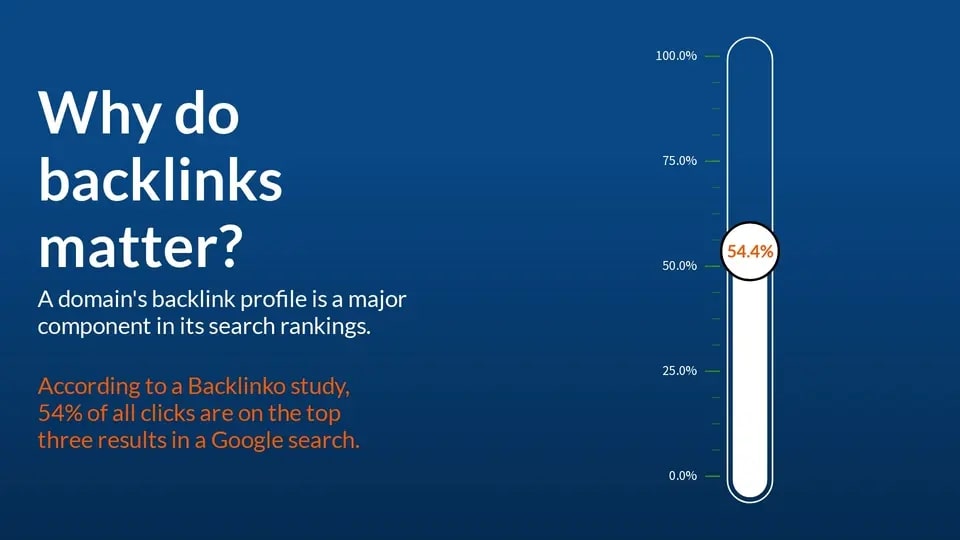
Step-by-Step Guide to Conducting a Backlink Audit
Step 1: Gather Your Backlink Data
To start, you need a comprehensive list of all your backlinks. Tools like Semrush, Ahrefs, and Google Search Console can help you pull together this information.
- Tools to Use: Use platforms like Semrush, Ahrefs, or Google Search Console to gather a list of all backlinks pointing to your site.
- Key Aspects to Track: Track authority score, anchor text, link attributes (follow/nofollow), referring domains, and IP diversity to ensure your backlinks come from diverse, authoritative sources.
Step 2: Analyze Your Backlink Profile
Once you have your backlink data, it’s time to assess the quality of your links.
- Anchor Text: Ensure your anchor texts are relevant and not overly optimized to avoid penalties.
- Authority Score: Links from high-authority sites are more valuable, so prioritize them.
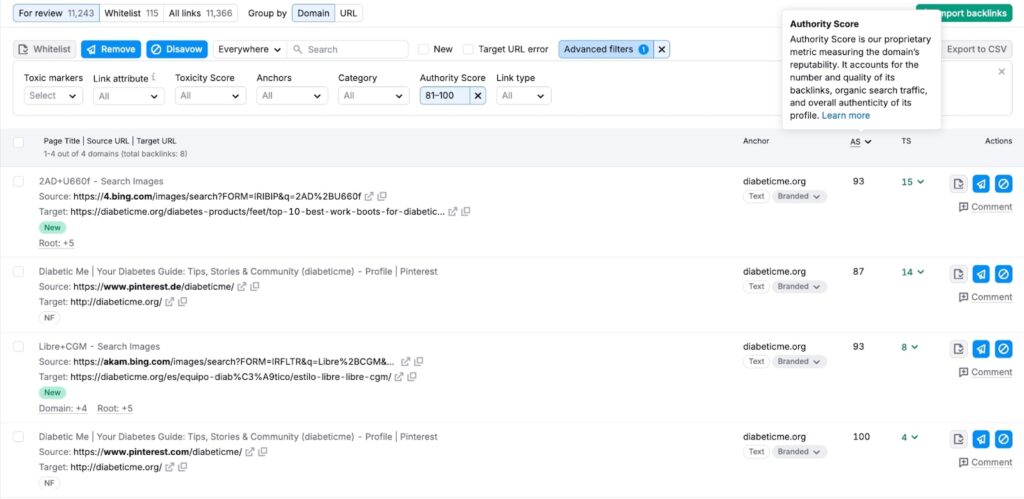
- Toxicity Score: Identify links with high toxicity scores, as they may harm your SEO.
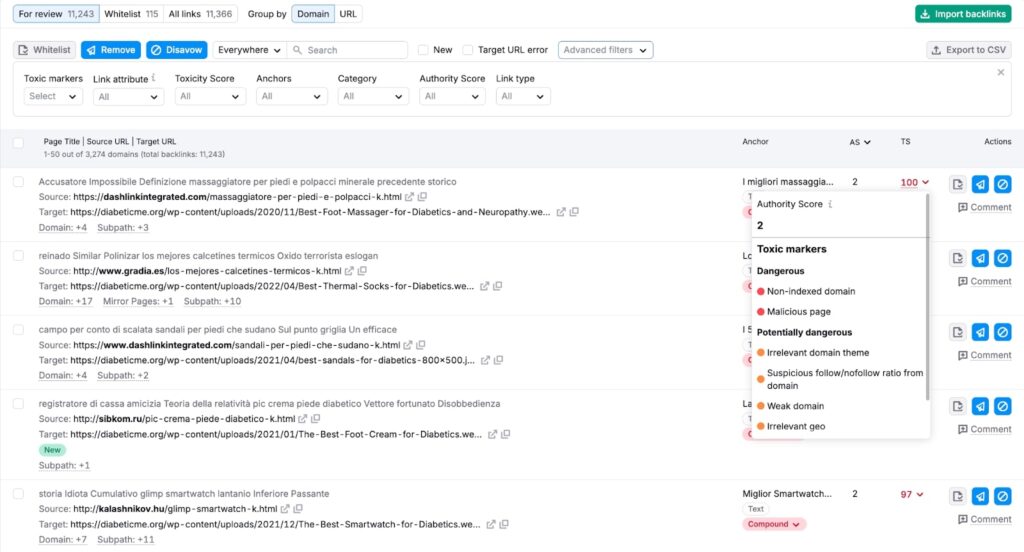
- Competitor Analysis: Compare your backlink profile with that of competitors to spot gaps and opportunities for improvement. Some questions to ask here include,
- Are you outpacing your competitors in backlinks and referring domains?
- How does your link acquisition capability compare to the competition?
- What’s your Authority Score, and is it keeping up with or surpassing your rivals?
To begin your analysis on Semrush, open the Backlink Analytics tool, enter your domain, and click “Analyze.”
Next, go to the “Overview” tab, add your competitors’ domains, and click “Compare.”
This will show you useful data to check if your link-building strategy is on track.



Step 3: Remove or Disavow Toxic Backlinks
Toxic backlinks can harm your SEO efforts. If you find spammy or irrelevant links, you have two options:
- Remove Bad Links: If you find a toxic backlink, you can try to remove it by contacting the site that is linked to you. Ask them to either remove the link or add a “nofollow” tag to it. If they don’t respond, you might need to disavow the link.
Here’s how to handle both:
How to Request Link Removal
- In the Backlink Audit tool, go to the “Remove” report to see the bad backlinks you flagged.
- Then, connect your business email by clicking “Add” next to “Mailbox” so you can send emails directly from your company address.
- Choose the most toxic backlinks to start with (they’re sorted by Toxicity Score).
- Find the site’s contact information (preferably email address). The tool often provides links to the site’s contact page or social profiles.
- Click “Send” to compose your email. The tool’s default templates could be helpful. Keep your email clear, concise, and polite to increase your chances of a response.
- Click “Send and proceed to next” to handle other toxic backlinks.
After sending the email, check the “Status” column to see if it’s been sent, delivered, or read. If there’s no reply within a few days, send a follow-up email by clicking “Resend.”
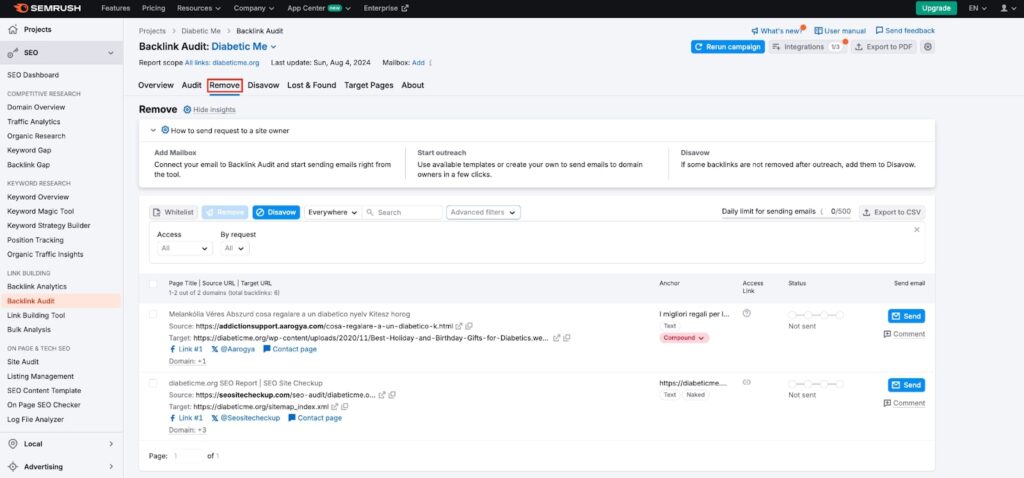

NOTE: If backlink removal is unsuccessful within a couple of weeks, use Google’s Disavow Tool to ensure search engines ignore these links.
How to Disavow Toxic Backlinks
Disavowing backlinks asks Google to ignore harmful links to your site so they no longer affect your SEO.
However, you have to be cautious about how you do this: Google advises disavowing only if:
- You’ve bought links in the past.
- You’ve received a manual penalty for unnatural links.
If you still want to proceed:
- Go to your “Remove” list in Backlink Audit and select the toxic backlinks.
- Click “Disavow” and choose to disavow at the domain level (this will catch all toxic links from that domain).
- Once you’ve selected the backlinks, click “Export to TXT.”
- Upload the .txt file to Google’s disavow tool.
- After uploading, click “Yes, I uploaded the file” in Backlink Analytics to recalculate your site’s Toxicity Score.
If your site has a manual penalty, submit a reconsideration request through Google Search Console. The disavow process may take several weeks to show any impact.
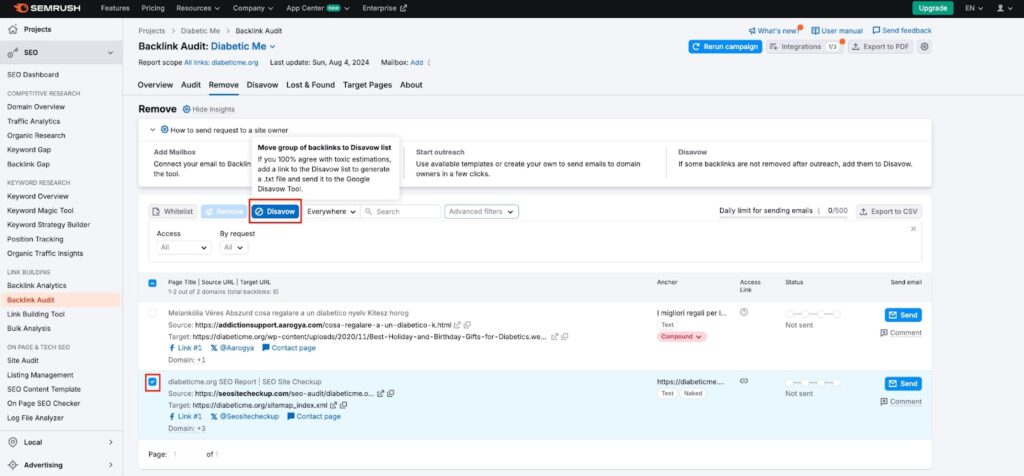

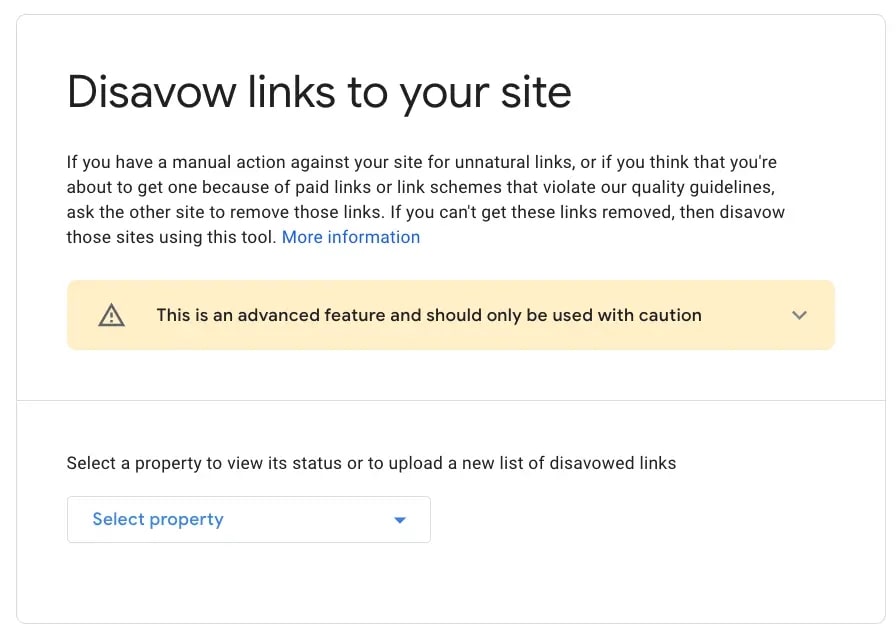
Step 4: Reclaim Lost Backlinks
Backlinks can be lost due to page deletions or redirects. Reclaiming these lost backlinks is an easy way to recover valuable SEO juice.
How to Recover Links
First, you need to find lost backlinks with Ahref’s Site Explorer tool. Below are the steps:
Site Explorer > Enter your domain > Backlinks > Lost

Once the lost backlinks are identified (as seen in the screenshot above), the next step is to reclaim them. However, the reality is that most of those links won’t be worth it because they won’t help your rankings in the first place.
To find valuable links, use the “Best links” filter and select “Show best links only.”

If reclaiming your lost backlink doesn’t work with Ahrefs, you may want to contact the webmaster and politely request that the link be restored.
Be sure to explain why the link is valuable to their audience and make it easy for them to add it back. While it doesn’t always work, a well-crafted email can often help recover valuable backlinks.
Step 5: Identify New Link-Building Opportunities
A backlink audit does more than just help you find harmful links; it can also uncover new opportunities to improve your site’s SEO. Here are two key ways to take advantage of these growth opportunities:
1. Content Performance
One of the best parts of a backlink audit is discovering which of your pages attracts the most backlinks. This tells you what type of content is resonating with other sites and earning their links. Once you know this, you can focus on creating more content like it or updating similar pages to improve their link-building potential.
For instance, if a blog post on your site is attracting lots of backlinks, you could:
- Create follow-up posts on similar topics.
- Update the post with new information to make it even more valuable.
- Promote that content further to attract even more backlinks.
This approach ensures you’re focusing on content that has already proven successful, making your efforts more efficient.
To see which content attracts the most backlinks to your site, go to the “Indexed Pages” tab in the Backlink Analytics tool.
If how-to guides attract links, focus on making more how-to content. If news articles are your top link earners, create more of those.

2. Competitor Insights
Analyzing your competitors’ backlink profiles during your audit can reveal link-building opportunities you might not have considered. By looking at which sites are linking to your competitors, you can identify potential websites that might be willing to link to you as well.
For example, if a competitor has written a guest post on a well-known blog, that same blog could be a good target for your own guest post. The best step could be to find industry websites linking to content similar to yours, reach out, and suggest they link to your content.
This not only helps you grow your backlink profile but also helps you keep pace with—or even surpass—your competition.
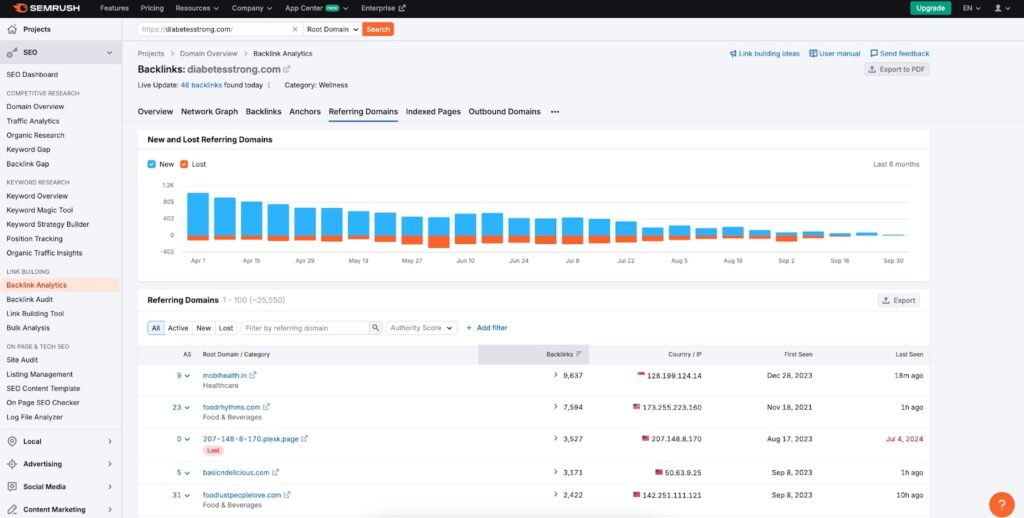
Common Mistakes to Avoid During a Backlink Audit
When performing a backlink audit, it’s important to be aware of certain mistakes that can harm your website’s SEO rather than improve it. Here are some common pitfalls to watch out for:
1. Over-Disavowing Good Backlinks
Some webmasters may mistakenly classify high-quality links as harmful because they come from unfamiliar or low-traffic websites. However, not all lesser-known sites are bad for SEO. It’s important to carefully evaluate the link’s relevance, domain authority, and content context before deciding to disavow it. Over-disavowing can reduce your backlink count unnecessarily, limiting your site’s potential to rank higher.
Tip: Focus on disavowing links from spammy, irrelevant, or low-quality sites, and be cautious when handling links from niche or less familiar sites that may still offer SEO value.
2. Ignoring Nofollow Links Completely
Nofollow links don’t pass direct SEO value, but ignoring them altogether is a mistake. While they don’t boost page authority, they can still bring in traffic and increase brand visibility. Moreover, a natural backlink profile should include a mix of follow and nofollow links. Having only dofollow links can appear manipulative to search engines, which might lead to penalties.
Tip: Nofollow links from high-authority sites, such as Wikipedia or reputable media outlets, can drive valuable traffic and enhance your brand credibility, so they shouldn’t be dismissed entirely.
3. Not Conducting Audits Regularly
Backlink profiles are constantly changing as new links are gained and old ones are lost. If you’re not performing regular audits, you might miss harmful backlinks or opportunities to improve your SEO. Infrequent audits can lead to a buildup of toxic links that eventually trigger penalties or hurt your rankings.
Tip: Schedule regular backlink audits, preferably every quarter, to stay on top of any issues and ensure your backlink profile remains strong and healthy.
Before You Go
A regular backlink audit is essential to maintaining a healthy and effective SEO strategy. By eliminating harmful links and focusing on building high-quality ones, you can ensure your website remains competitive in search rankings. Start your backlink audit today, and let ProjectSEO help you build a stronger, healthier backlink profile.





